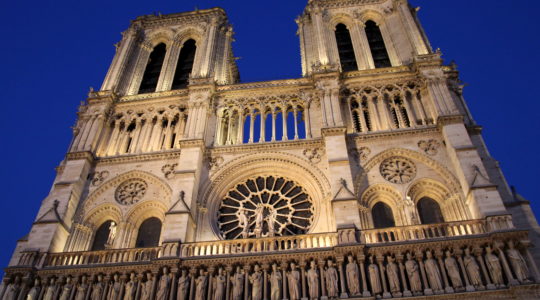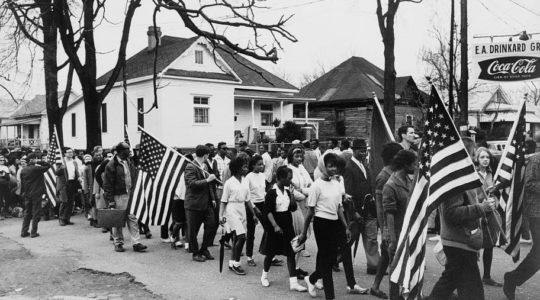The International Committee for the Auschwitz Monument announced today that construction of the monument — based on a design emerging from an international contest in which 658 artists took part — will begin within the next three months, on the site of the notorious Auschwitz camp where the Nazis annihilated hundreds of thousands of Jews in gas chambers.
Herman Langbein, executive secretary of the committee, expressed his appreciation of the decision of the Polish Government to hold an international competition for the monument. The winners presented four plans and a jury picked one of the four. The committee is headed by the famous British sculptor, Henri Moore.
The winning design consists of a diagonal path to cut across the site of the Auschwitz murder camp where the barracks stood. The path leads to the ruins of the crematories. Along both sides of this path, on the camp railroad tracks, will be 23 concrete blocks linked by sculptured iron hooks, to recall the trains which brought the victims to Auschwitz. Each block contains the name of one of the 23 countries from which the martyrs were shipped.
The artists who participated in the accepted design were Andre Cascella, Pietro Cascella, Giorgio Simoncini, Tomaso Valle and Mauirizio Vitale of Italy; Oskar Hasen, Jorgyi Jarnuskiewicz, Julian Palka and Lechoslaw Rosinski of Poland and Julio Lafuente of Spain, who worked with the Italian artists.
The construction will be started by the Polish Government, independently of private contributions as soon as blueprints are complete. Fund collections are underway in France, Italy, Switzerland and Italy and are expected to start soon in the United States. The Polish Government has already expropriated the land area of the Auschwitz camp, with an additional strip of land around the camp for the memorial.
JTA has documented Jewish history in real-time for over a century. Keep our journalism strong by joining us in supporting independent, award-winning reporting.
The Archive of the Jewish Telegraphic Agency includes articles published from 1923 to 2008. Archive stories reflect the journalistic standards and practices of the time they were published.



